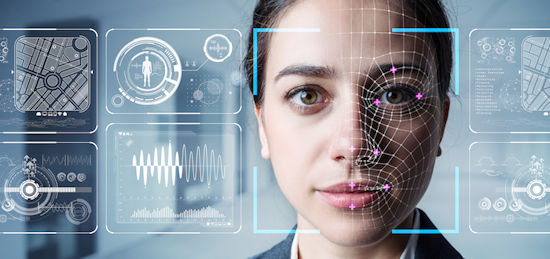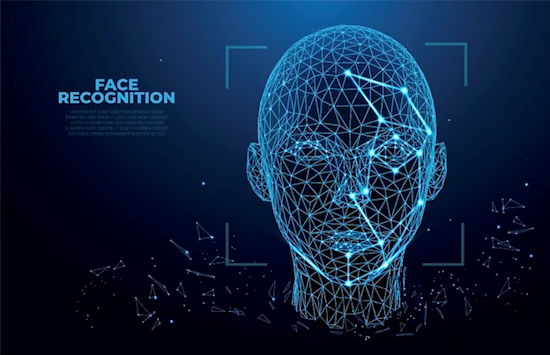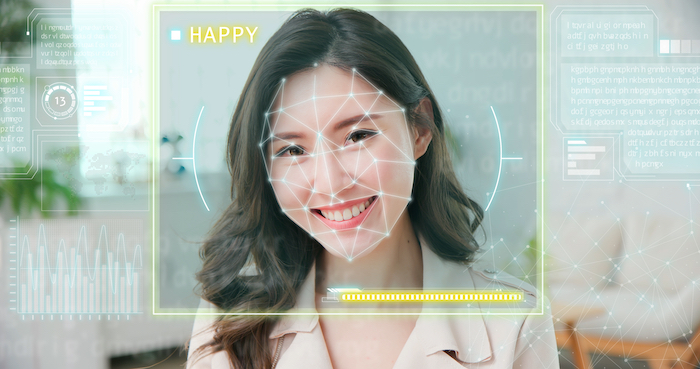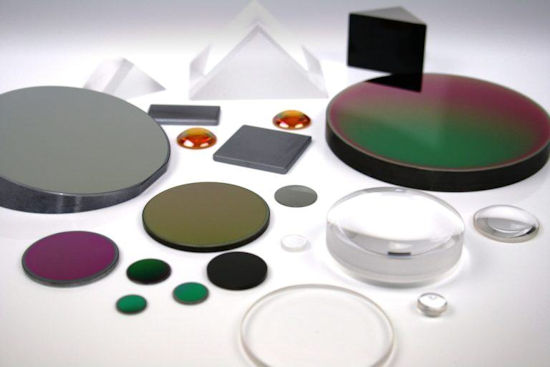Biometric Technology: The Many Faces of Facial Recognition
1st Sep 2021The adoption of facial recognition technology in today’s tech-savvy world is rife, and, unlike many perceived a few decades ago, it’s not just high-tech, futuristic devices that sport the tech. Here, Knight Optical – the leading supplier of on-spec, metrology-tested optical components – explores the rising use of facial recognition.

For film buffs and theatregoers, facial recognition may conjure visions of dystopian cities and fearless vigilantes or even top-security futuristic Government-owned facilities – particularly if you’re a fan of 1980s action-packed blockbusters. Little did we know back then that the very technology used in these stories – such as Batman’s bat-photoscope, as a high-tech example – would be omnipresent in everyday life.

A Brief History on Facial Recognition
The truth is facial recognition has been around for decades. The earliest pioneers of this form of biometric technology date back to the 1960s. In 1964, three innovators, Woody Bledsoe, Helen Chan Wolf and Charles Bisson, began working on a computer-based system that identifies a human face. The system worked by pinpointing various facial features – referred to as “landmarks” – such as the centre of people’s eyes and mouths. However, due to insufficient technology and a lack of funding at the time of development, the trio’s work sat unpublished for an extended period.
What is Facial Recognition Used For?
We’ve all encountered some form of biometric tech – from modern-day passport control in our airports to thumb- and fingerprints for access control and even iris recognition in border control situations. Whether we like it or not, biometric technologies are everywhere. Cameras, for example, pick up pictures of our faces every single day – and, often, you don’t even need to leave the house for them to do so. For some, our smartphones use facial recognition technology to grant us access to our devices or, using yet another form of biometric technology, uses our finger- and thumbprints as a form of identification.
How COVID Has Influenced Facial Recognition Technologies
Facial recognition technology has recently been developed as the coronavirus pandemic has spread throughout the world. Some manufacturers enhanced systems to integrate other forms of COVID-busting issues. For instance, Viewell Electronics Technology Co.’s Access Control Camera was joined by a new temperature detection feature to check building users’ health1.
Furthermore, after widespread use of masks and with facial components suddenly concealed – i.e., the mouth and nose that were once crucial identifiers – facial technologies also began to fail. During the peak of the pandemic, The Verge reported error rates rising as high as 50%2. Some manufacturers developed the technology to meet these newfound ways of living to combat the burgeoning issue of unidentifiable mask-wearing users. One of these organisations was the Japanese company NEC, which in early January this year claimed to have developed a form of the tech that relies on other facial characteristics, such as a person’s eyes3.

What’s Next for Facial Recognition?
So, now the rollout of the COVID jab is well underway globally, and lifted restrictions have seen many leave their masks at home; where will the next stage of facial recognition take us? Let’s explore a few predictions.
We’ll be wearing it
Facial recognition being integrated into everyday objects – much like our smartphones – is set to take one step further as more wearable devices donning the technology is set to rise. Take, for example, a recent project by researchers at Cornell University in New York. The smart necklace, named NeckFace, uses IR cameras – and, of course, IR Optics (including IR Bandpass Filters) to capture faces and is forecast to be used for virtual reality (VR) purposes4.
It’ll be Pulling Us Up on Not Concentrating on the Road
The technologies used in the automobile industry are truly inspirational, so it’s not surprising that car manufacturers, too, are exploring the potential of biometric technology. A prime example comes from Hyundai Mobis, which is working on an innovative use for iris recognition tech. The brand is developing a Driver State Warning System (DSW) that identifies the direction of a driver’s face, recognises if their eyes are closed and detects careless driving via the activity of a user’s pupils5.
It’ll Know if We’re Feeling Happy or Sad
In fact, these systems are active today. Known as facial emotion recognition (FER), this technology identifies human emotions by picking up on a person’s facial expressions. As these systems aren’t currently widely adopted, FER has a few future proposed uses. These utilisations include being applied as a form of analysing a workforce’s productivity and fatigue levels, as an indispensable digital marketing tool to assess the reaction of a newly launched product amongst potential customers. And, in a health and wellbeing setting – to determine the emotional state of patients, which could lead to the diagnosis of conditions like depression6.

It’ll be Checking Us In, Clocking Us In and Logging Us In
Gone will be the days of waiting at your doctor’s or hospital’s reception desk or using the self-service device to announce your arrival – you’ll be identified upon entry of a premises and given instructions on how to get to your appointment. There’ll also be no clocking in machines in the office – a computer-based biometric system will inform employers of their employees’ whereabouts. And, as for computers, there are laptops and desktops on today’s marketplace seeking to eliminate pins and passwords with facial recognition.
Facial Recognition Isn’t for Everyone
That said, not everybody wants to be recognised, and in recent years, there have been public ‘concerns’ over privacy when it comes to facial recognition. As such, inventors have fought back with facial recognition-deterring creations. One of the products reported are the Phantom Glasses that block infrared (IR) light and are specifically designed to defeat 3D dot matrix face-mapping systems – a system used in common smartphones.
What Optical Components Are Used for Facial Recognition Technology?
Of course, optical components play a leading role in the operability of facial recognition. Infrared (IR) Optical Components are amongst the most popular for specifiers working on facial recognition technology.
Our custom-made and stock IR Optics that are regularly specified for facial recognition applications include (but are not limited to):
Click here to view our full range of IR Optical Components, including our bespoke substrates.
Alternatively, if you’re looking for ultraviolet (UV) optics, click here. And, for visible optical components, please click here.

Why Choose Knight Optical for your Application?
Discerning customers rely on Knight Optical not only for the premium quality of our output and in-house state-of-the-art Metrology Laboratory and QA Department‘s capabilities but because – as well as a range of Stock Optics (available for next-day dispatch) – we also offer our optics as Custom-Made Components.
This year, we’re celebrating 30 years in business. With three decades’ experience under our belt and a whole host of long-standing world-renowned customers on our books, we are proud to have worked on some of the most ground-breaking innovations.
If you are looking for premium-quality, bespoke optical components, please do not hesitate to get in touch with a member of the Technical Sales Team today.
FOOTNOTES
1https://www.photonics.com/Products/Facial_Recognition_and_Temperature_Detection/p6/v0185/i1265/pr65593
2https://www.theverge.com/2020/7/28/21344751/facial-recognition-face-masks-accuracy-nist-study
3https://www.bbc.co.uk/news/technology-55573802
4https://www.photonics.com/Articles/Smart_Necklace_Tracks_Facial_Expressions/p6/vo208/i1337/a67243
5https://tech.hyundaimotorgroup.com/article/in-car-biometric-technology-for-human-interaction/
6https://edps.europa.eu/data-protection/our-work/publications/techdispatch/techdispatch-12021-facial-emotion-recognition_en